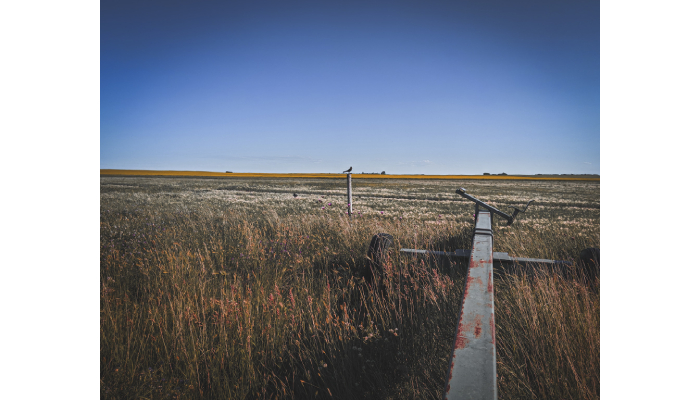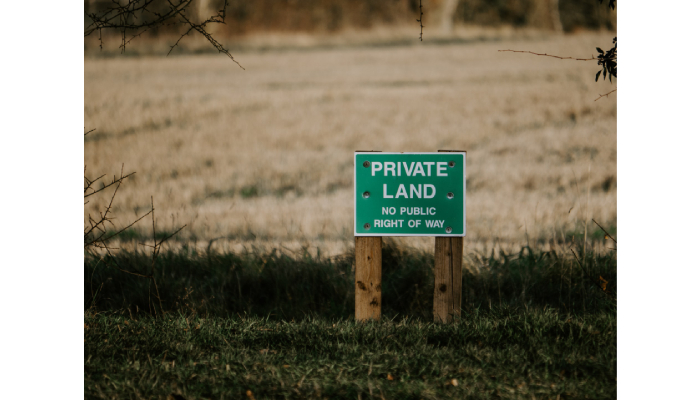
Selling vacant land isn’t like selling a house or commercial building. Buyers focus more on zoning, access, soil quality, and possible uses than on what’s physically there. It helps to have detailed info ready to build trust and justify your price. Do some research on recent sales nearby and consider hiring a land appraiser or agent who knows the local market well. Knowing the land’s best use, like farming, development, or recreation, and highlighting that can attract serious buyers willing to pay more. Also, clear the property to make a good first impression and use strong marketing methods, including quality photos and social media outreach.
How Vacant Land Sales Differ From Other Properties?
Sell my vacant land is quite different from selling homes or commercial buildings because they attract fewer buyers and require more focused marketing efforts. Buyers looking at vacant land aren’t concerned with physical structures like plumbing or roofing since those don’t exist; instead, they focus on zoning rules, access roads, water rights, and the natural features of the land. Factors like soil quality and topography play a big role because they affect how the land can be used, whether for farming, building, or recreation. Since vacant land is harder to inspect and evaluate on site, buyers often expect detailed information upfront, including surveys, legal restrictions, and any potential environmental or access issues. They tend to think more about future possibilities and whether the land can be developed or used as intended rather than what’s immediately usable. This means sales can take longer because buyers have to do more research and due diligence. Being clear, transparent, and providing easy-to-understand details about the land’s potential helps reduce hesitation and builds trust, setting realistic expectations about the timeline and pricing.

Research Market Value and Set a Fair Price
To get the highest price when selling your vacant land, start by researching recent sales of similar parcels nearby. This helps you understand realistic price ranges and avoid guessing. Look at active listings too, so you know what buyers are currently expecting and what competition exists. Hiring a professional land appraiser is often worth the cost, as they provide an unbiased, accurate valuation based on local market trends and land specifics. When setting your price, consider the land’s highest and best use, that is, the most profitable legal use possible, whether it’s agricultural, residential development, or recreational. Location matters a lot: easy road access, utilities, and favorable zoning can boost value, while landlocked status or poor access lowers it. Unique features like water rights, mineral rights, or timber can add value, so factor those in as well. Avoid pricing too high, which can scare off buyers and cause your land to sit unsold for long periods. On the other hand, pricing too low might raise suspicion and lead to lost profit. Throughout the selling process, keep an eye on market changes and buyer feedback, and be ready to adjust your price accordingly. This balanced, research-based approach helps set a fair price that attracts serious buyers without leaving money on the table.
Identify and Promote the Land’s Best Use
To get the highest price for your vacant land, start by clearly identifying its best use. This means determining whether the land is most suitable for agriculture, residential development, commercial purposes, recreation, or other uses. Research local zoning laws carefully to confirm what uses are permitted and explore whether zoning upgrades or variances are possible to increase the land’s appeal. If the area has recently undergone zoning changes or applications are pending that could boost development potential, be sure to highlight these points to prospective buyers. For agricultural or residential buyers, emphasize factors like soil quality, water availability, and flood risk, providing any data or reports you have to support these claims. If your land can be subdivided or developed, explain that potential clearly, perhaps with site plans or concept drawings to help buyers visualize the possibilities. Natural features such as timber, hunting grounds, or recreational amenities can attract niche buyers, so describe these attributes in detail. Make sure to disclose any deed restrictions or easements upfront, as these can limit use and affect value. Offering well-organized information that matches buyers’ goals builds confidence and helps justify a higher asking price.
Decide Whether to Sell Land Whole or in Parcels
When deciding how to sell your vacant land, one key choice is whether to sell it as one large tract or subdivide it into smaller parcels. Start by researching your local market to see if buyers prefer smaller, more affordable plots or larger, contiguous land. In many suburban or developing areas, subdividing can attract more buyers looking for specific sizes, which might increase the total sale price. However, subdivision comes with costs and legal hurdles, such as meeting zoning rules and ensuring infrastructure like roads and utilities are in place. It’s important to consult a land surveyor or specialist to understand if subdivision is feasible and economically worthwhile. Selling the land whole may appeal to investors or developers who need larger tracts, often simplifying the sale and reducing marketing complexity. Keep in mind that selling multiple parcels can mean more marketing effort, potentially staggered sales, and a longer timeline before the entire property is sold. Ultimately, weigh the expected financial return against how much time and management you’re willing to invest, and consider buyer preferences in your area to make an informed decision.
Improve Land Appearance to Attract Buyers
Clearing trash and debris from your vacant land creates an immediate impression of care and maintenance, making the property feel more inviting to potential buyers. Keeping vegetation trimmed or mowed not only improves visibility but also allows buyers to better imagine the land’s potential uses. For properties with natural features like woods, preserve them if they appeal to specific buyers, such as hunters or timber investors, instead of over-clearing. Clearly marking property boundaries with stakes or fencing helps buyers understand the exact size and limits, reducing uncertainty. High-quality photos and videos, especially drone shots, are essential for showcasing the land’s layout and key features from different angles. For development land, consider offering 3D renderings or conceptual site plans to help buyers visualize future possibilities. If access roads exist, repairing or improving them demonstrates ease of entry, which can be a major selling point. Adding clear signage with contact details and important property facts grabs attention from those passing by.
Gather and Organize All Legal Documents
Before listing your vacant land, collect all relevant legal documents that prove your ownership and clarify the property’s details. Start with the deed and proof of ownership to confirm your right to sell. Recent surveys are essential as they clearly outline boundaries and acreage, helping buyers understand exactly what they’re purchasing. Include zoning documents that specify the current designation and any pending changes, since zoning impacts what buyers can legally do with the land. Don’t forget to gather records related to easements, rights of way, and access agreements, as these affect usability and value. If your property has water rights, mineral rights, or environmental reports, have those ready, as they often influence buyer decisions. Be upfront about any restrictions, covenants, or deed limitations that could limit use. If you’ve applied for permits or zoning upgrades, include these too, as they can add value and interest. Working with a real estate attorney can ensure all documents meet local laws and disclosure requirements, reducing the chance of surprises that delay or derail the sale. Organize both digital and hard copies so you can quickly share accurate information with prospective buyers, building their confidence and helping justify your asking price.
Choose the Best Selling Method for Your Land
Selecting the right selling method for your vacant land depends heavily on its location, type, and your financial goals. Listing your property on major real estate websites like Zillow,or LandWatch can expose it to a wide audience, increasing the chances of finding the right buyer quickly. However, if you prefer a more discreet approach, private listings or exclusive sales through your agent can target serious buyers without drawing too much public attention. Auctions are another option to consider, especially if you want to spark competition among buyers, which can sometimes raise the sale price beyond expectations. Offering seller financing expands your buyer pool by allowing payments over time, which can attract those who might not have full cash upfront and potentially get you a higher overall price, though it requires careful management of payment risks. It’s important to assess which methods work best in your local market by consulting with an agent familiar with land sales in your area. Sometimes a hybrid approach, such as listing online while setting an auction date, can combine broad exposure with urgency to boost buyer interest. Be sure to set clear terms and realistic timelines that align with how quickly you want to sell and your price expectations. Each selling method has its costs, benefits, and level of control, so prepare marketing materials that fit your chosen strategy, whether that’s professional photos for online listings or detailed brochures for private buyers. Ultimately, working closely with your agent to understand the local market trends and buyer preferences will guide you toward the most effective way to maximize your land’s sale price.
Hire a Real Estate Agent Specialized in Land
Choosing a real estate agent who specializes in vacant land can significantly impact the final sale price. Unlike residential properties, land sales require an agent with a deep understanding of local zoning laws, land use restrictions, and market trends specific to the area. Look for agents who have a proven track record selling vacant land, and verify their experience by asking for recent sales examples and references. A well-connected agent will have access to potential buyers such as developers, farmers, or investors, increasing your chances of a quicker, more profitable sale. Beyond traditional marketing, top agents use advanced tools like drone photography, mapping software, and land-specific online platforms to showcase your property’s potential. They should also be comfortable navigating complex negotiations and specialized contracts unique to land transactions. Additionally, an effective agent will offer a comprehensive marketing plan that includes both digital and traditional media, ensuring your land gains maximum exposure. Clear communication and responsiveness throughout the process help maintain buyer interest and trust. Lastly, a knowledgeable agent works closely with attorneys to handle legal due diligence and contract details, reducing your stress and avoiding costly delays. Hiring the right land specialist not only saves time and hassle but also positions your property to attract serious buyers willing to pay top dollar.